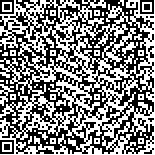邓紫婷,文丽,贾英.体外冲击波对兔膝骨关节炎软骨组织中转化生长因子β1和白介素1β表达的影响[J].中华物理医学与康复杂志,2022,44(1):18-24
扫码阅读全文

|
| 体外冲击波对兔膝骨关节炎软骨组织中转化生长因子β1和白介素1β表达的影响 |
|
| |
| DOI:10.3760/cma.j.issn.0254-1424.2022.01.003 |
| 中文关键词: 膝骨关节炎 冲击波 转化生长因子β1 白介素1β |
| 英文关键词: Knee osteoarthritis Transforming growth factor-β1 Interleukin-1β Shock wave therapy |
| 基金项目:重庆市渝中区科委项目(20170111) |
|
| 摘要点击次数: 4845 |
| 全文下载次数: 49564 |
| 中文摘要: |
| 目的 观察体外冲击波治疗对兔膝骨关节炎(OA)模型软骨组织中转化生长因子β1(TGF-β1)和白介素1β(IL-1β)的表达影响,并探讨体外冲击波治疗兔膝OA的机制。 方法 选取雌性新西兰兔50只,采用随机数字表法分别为正常对照组、模型组、冲击波A组[能量密度流(EFD)为0.05(mJ/mm2)]、冲击波B组(EFD为0.11 mJ/mm2)、冲击波C组(EFD为0.22 mJ/mm2),每组10只新西兰兔。模型组和冲击波A、B、C组均采用Hulth′s法建立膝OA动物模型。造模成功后,冲击波A、B和C组分别给予对应能量密度流的体外冲击波治疗,均每7 d治疗1次,每次冲击2000下,连续治疗4周。正常对照组和模型组均不给予体外冲击波治疗。于冲击波A、B、C组体外冲击波治疗4周后,处死5组新西兰兔,取兔右侧膝关节软骨组织,肉眼观察关节软骨,HE染色后采用改良Mankin′s评分评估软骨组织退变情况,采用免疫组化法,蛋白印迹法和实时荧光定量多聚酶链式反应分别测定兔软骨中TGF-β1和IL-1β的阳性细胞数、TGF-β1和IL-1β的蛋白量以及TGF-β1和IL-1β的mRNA表达量。 结果 与正常对照组比较,模型组肉眼可见关节软骨退变。模型组改良的Mankin′s评分为(7.30±0.45)分,显著高于正常对照组的(0.34±0.06)分,且模型组TGF-β1和IL-1β的蛋白和mRNA的表达量较正常对照组亦明显升高,差异均有统计学意义(P<0.05)。冲击波A、B、C组软骨组织的改良Mankin′s评分均显著低于模型组,差异均有统计学意义(P<0.05),冲击波C组软骨组织中的TGF-β1和IL-1β的蛋白和mRNA表达量明显低于模型组,差异均有统计学意义(P<0.05)。 结论 体外冲击波可降低兔膝OA软骨中TGF-β1和IL-1β的表达,且治疗效果与体外冲击波的能量密度流呈正相关,提示冲击波可能通过调节TGF-β1的表达来减少炎性因子IL-1β的表达,从而达到对OA的防治作用。 |
| 英文摘要: |
| Objective To seek any effect of extracorporeal shockwave treatment on the expression of transforming growth factor-β1 (TGF-β1) and interleukin-1β (IL-1β) in the cartilage tissue of rabbits with knee osteoarthritis (OA), and its therapeutic mechanism. Methods Fifty female New Zealand rabbits were randomly divided into a normal control group, a model group, and three shockwave groups A, B and C, each of 10. Except for the normal control group, an OA model was established in the other groups using Hulth′s method. The shockwave groups were given 2000 shocks in each weekly session over 4 weeks. The energy flow density in group A was 0.05mJ/mm2; in B it was 0.11mJ/mm2 and in C 0.22mJ/mm2. The normal control and model groups were not shocked. All the rabbits were then sacrificed and their right knee cartilage tissue was sampled to observe any pathological changes and assign improved Mankin scores. Immunohistochemistry was used to count the number of TGF-β1 and IL-1β-positive cells in the cartilage. Western blotting and real-time fluorescence quantitative polymerase chain reactions were employed to determine the protein and mRNA expression of IL-1β and TGF-β1. Results Compared with the normal group, degeneration of articular cartilage was observed in the model group. The average Mankin′s score of the model group was significantly higher than that of the normal control group. The average expression of TGF-β1 and IL-1β protein and mRNA in the model group had increased significantly compared with the normal control group. The average Mankin′s scores of the shock wave groups were all significantly lower than the model group′s average. Group C′s average expression levels of TGF-β1 and IL-1β protein and mRNA were significantly lower than the model group′s averages. Conclusions Extracorporeal shockwave therapy can reduce the expression of TGF-β1 and IL-1β in the cartilage of an arthritic knee, at least in rabbits. Its therapeutic effect is positively correlated with the density of the energy flow, suggesting that shock waves may reduce the expression of inflammatory factor IL-1β by regulating the expression of TGF-β1. They should be applied in the prevention and treatment of osteoarthritis. |
|
查看全文
查看/发表评论 下载PDF阅读器 |
| 关闭 |